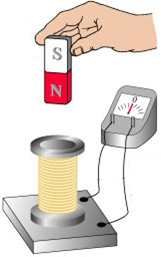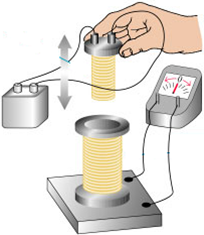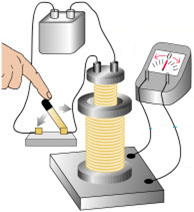Basics of Electromagnetic Induction
Consider a coil of wire connected to a galvanometer.
- When the nearby magnet is stationary, the meter shows no current.
- When we move the magnet either towards or away from the coil, the meter shows current in the circuit, while the magnet is moving.
Now, we replace the magnet with a solenoid that is connected to a D.C. power supply. There is current flowing through the solenoid.
- When the solenoid is stationary, there is no current in the coil of wire (i.e. no deflection of needle shown on the galvanometer)
- There is current in the coil when the solenoid and the coil of wire are moving relative to each other.
If we introduce a switch into the circuit for the solenoid and keep both solenoid and coil of wire stationary relative to each other,
- There will be an induced current in the coil of wire only when the switch is turned on and off (i.e. when the current in the solenoid is changing).
The common element in all electromagnetic induction effects is the changing magnetic flux through a circuit.
Next: Faraday’s Law Of Induction & Lenz’s Law
Previous: Applications Of Ampere’s Law
Back To Electromagnetism (UY1)


